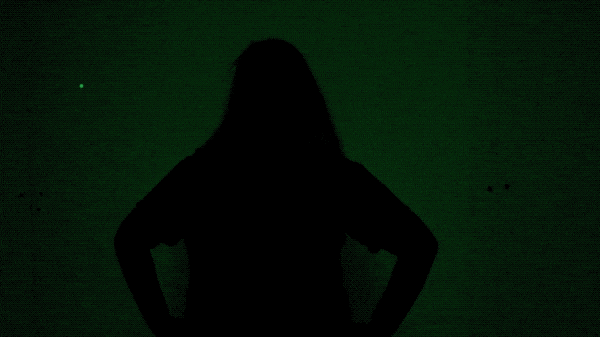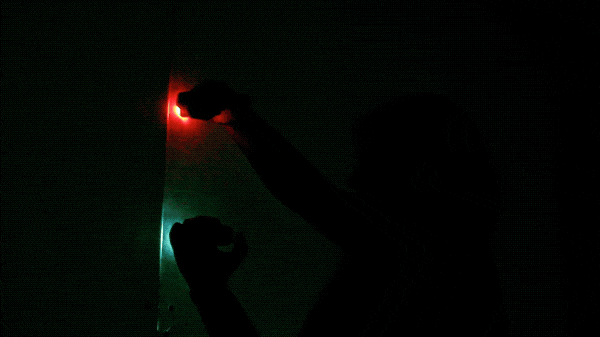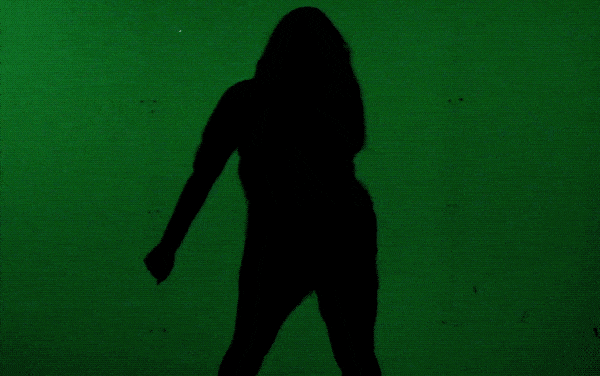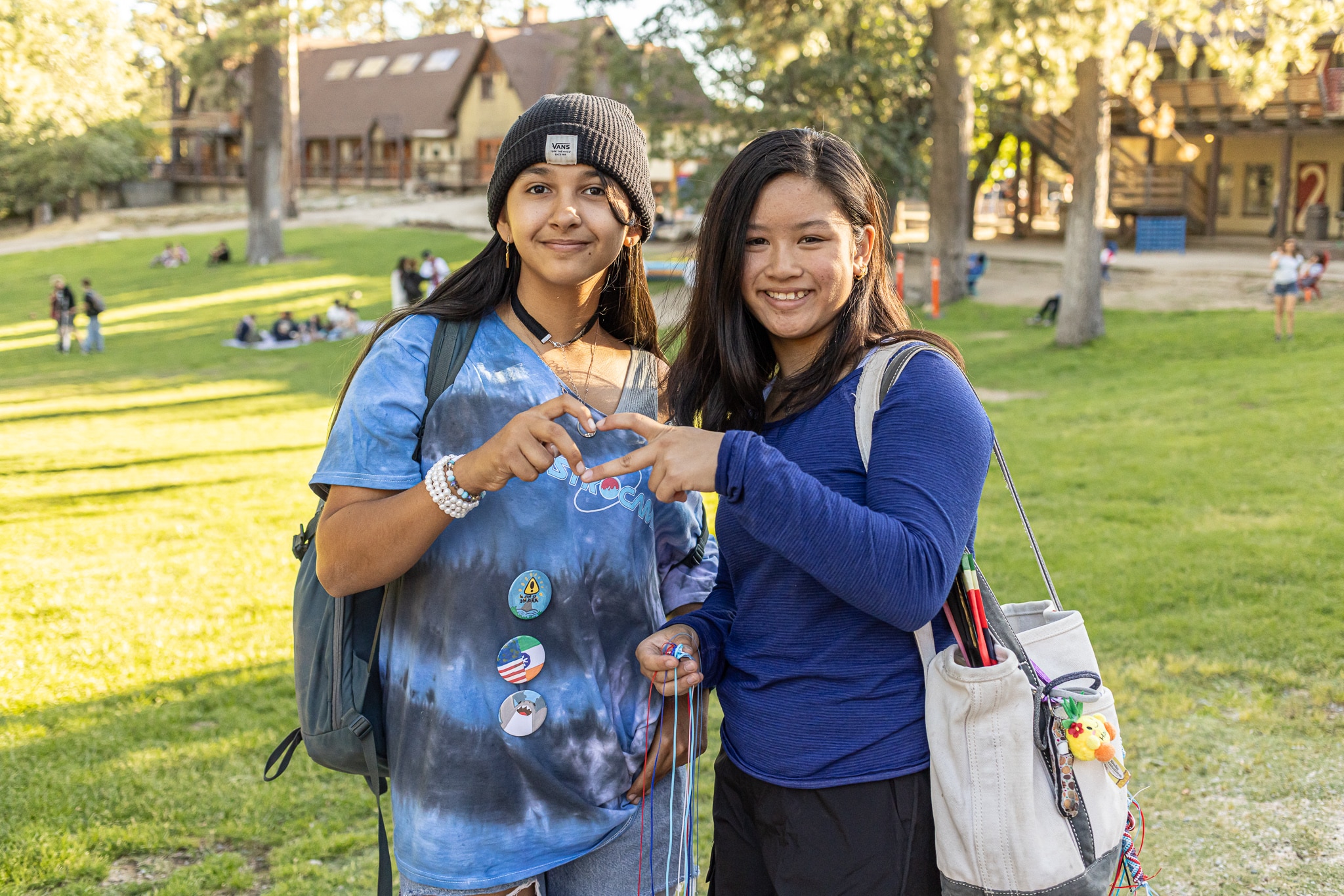
With the glow wall and glow-in-the-dark water bottles and frisbees here at AstroCamp, we often get asked how exactly they work. Well, it all comes down to a phenomenon called phosphorescence.

Like fluorescence, which is what you get when you shine a blacklight on something or pass electricity through a container of gas, phosphorescence involves the atoms of a substance absorbing energy and then retransmitting it as light. Unlike fluorescence, however, phosphorescent materials continue releasing light after the energy source is removed like Chloe’s shadow remaining after we use our flashbulb above. If not, your glow-in-the-dark water bottle wouldn’t work after the sun sets, which would be pretty useless. To understand how they keep releasing energy, we need to go down to the quantum level.
Phosphorescence is the result of energy transitions called “forbidden transitions” in quantum mechanics. These transitions are not universally impossible, but are actually just incapable of happening at a specific level. Once the level changes, however, these transitions are entirely possible; resulting in the energy transitions being slow and lasting after the energy source has been removed. Phosphorescence’s transitions involve a spin flip inside the atoms of the material, which is impossible in an electric dipole, but possible in a quadrupole.

Phosphorescence will function with any wavelength of light, but higher energy light like UV will produce a stronger and longer lasting glow. That can be seen clearly with the different lights above. We used red and violet flashlights and a violet laser, and you can see clearly that the red flashlight has the dimmest glow and the laser has the brightest. As light goes up in wavelength and down in frequency, like going from violet light to red light, it carries less energy. The laser and one flashlight are both violet though, so how is one releasing more energy? Lasers are amplified and focused light of one specific wavelength, but a flashlight is many wavelengths spreading out in a cone, giving it inherently less energy than a laser of the same color.

Now that you know how fluorescence works, try using different kinds of light on any glow-in-the-dark things you have and see what happens; have fun!

